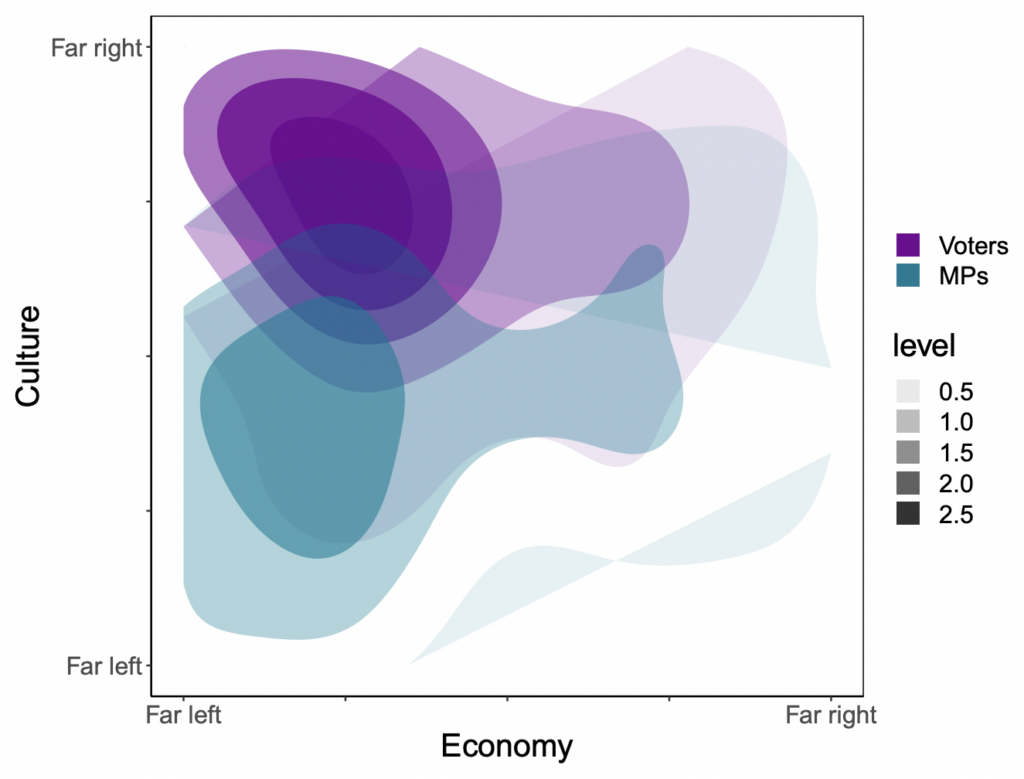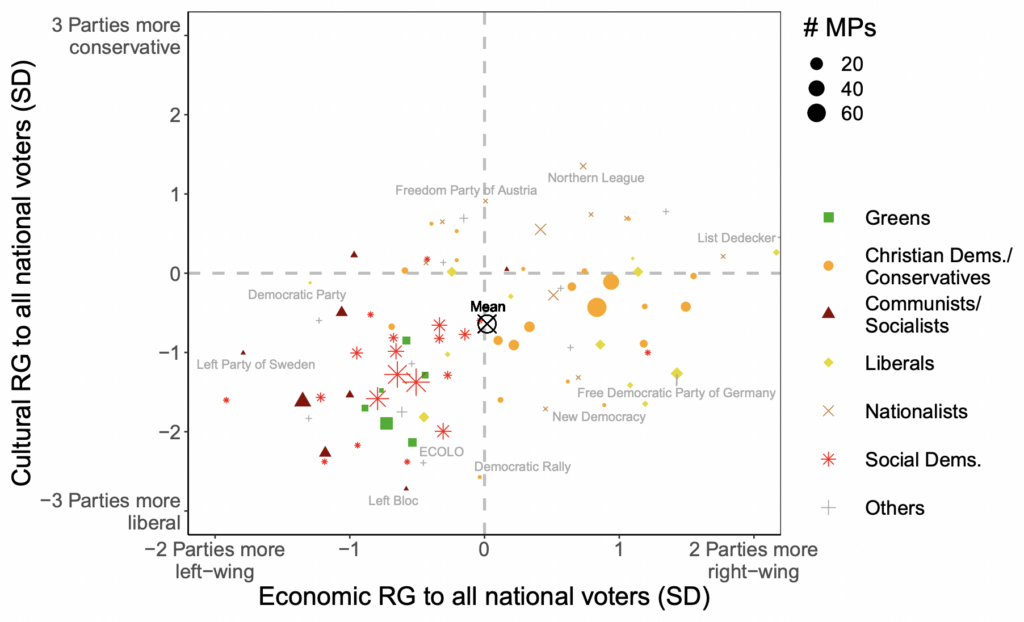What explains the rise of ‘populist’ parties in Europe – defined as those that claim to speak for ‘ordinary people’ while opposing the ‘corrupt establishment’? Academic political scientists (who lean overwhelmingly left) have emphasised factors like austerity, income inequality and ‘disinformation’. But these theories don’t make much sense.
Populists themselves claim that they represent voters who’ve been dismissed, ignored or forgotten by the mainstream parties – that they fill gaps in political representation. Is this true? A new paper suggests that yes, it is true.
Laurenz Günther combined information from two surveys that posed the same (or highly similar) questions to voters and candidates for political office. These were the European Voter Survey and the European Candidate Survey (both fielded in 2009). By comparing the answers of voters and elected politicians, he was able to see how similar their views are on different issues, and hence how well-represented voters are by their politicians.
In terms of analysis, Günther began by creating two broad indexes. This involved calculating for each respondent (i.e., each voter and each politician) the weighted average of their views on different issues, with weights equal to the overall importance of those issues according to voters. This was done separately for cultural issues like immigration and the EU, and economic issues like taxation and public ownership. Günther then plotted the two indexes against each other on a graph:

Here the shading simply represents the density of points, with purple referring to voters and green referring to politicians. What does the graph show? While voters have similar views to politicians on economic issues (the purple cloud overlaps substantially with the green cloud on the x-axis), they are much more right-wing on cultural issues (the purple cloud is much closer to the ‘far-right’ end of the y-axis). This is the first indication that populists do fill representation gaps.
Next, Günther calculated the difference between voters’ and politicians’ views on each separate issue. He found that it was largest on criminal sentencing and immigration, with voters being much more right-wing. Hence it is these issues that drive the gaps in political representation.
He then calculated each party’s representation gap with respect to the average voter on the two indexes mentioned above, and graphed the results. As you can see, mainstream parties are much more left-wing on the cultural index. Consequently, nationalist parties are (with a few minor exceptions) the only ones that represent culturally right-wing voters.

In the final part of his analysis, Günther used data from Germany to show that voters who are not well-represented by mainstream parties with respect to immigration (as measured by the difference between their views and the views of politicians from the closest non-AfD party) are much more likely to vote for the right-wing populist AfD. Which is pretty much a smoking gun for the representation gap theory.
Forget all the pontificating about austerity, inequality and disinformation. What’s happened in Europe over the last ten years is simple. A sizeable number of voters wanted less immigration but none of the mainstream parties represented them. As a result, populist parties came in to fill the gap.




